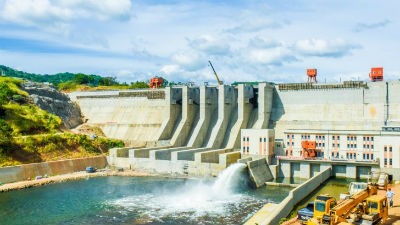
Sri Lanka’s verdant terrain and plentiful water reserves have served as the backbone of its hydroelectric power sector, making significant contributions to the nation’s energy stability and economic advancement. With a network of rivers, reservoirs, and cascading waterfalls spanning the island, Sri Lanka boasts extensive hydroelectric potential that continues to propel its thriving hydroelectric industry forward.
Hydropower has been a cornerstone of Sri Lanka’s energy landscape for many years, with major projects such as the Mahaweli and Victoria reservoirs playing pivotal roles in meeting the country’s electricity needs. These large-scale hydroelectric plants utilize the force of flowing water to generate clean and renewable electricity, serving as reliable power sources for both urban and rural areas.
In recent times, Sri Lanka has embarked on an ambitious endeavor to modernize and expand its hydroelectric infrastructure, leveraging technological advancements and engineering innovations to enhance energy production efficiency and mitigate environmental impact. Investments in new projects like the Uma Oya Multipurpose Development Project and the Moragolla Hydropower Plant underscore the government’s dedication to maximizing the nation’s hydroelectric potential.
Moreover, initiatives are underway to improve the efficiency and reliability of existing hydroelectric facilities through upgrades, rehabilitation, and maintenance efforts. By modernizing aging infrastructure and implementing best practices in hydroelectric management, Sri Lanka aims to ensure the long-term sustainability and resilience of its hydroelectric sector amidst evolving climate patterns and energy demand dynamics.
Furthermore, the development of hydropower in Sri Lanka extends beyond electricity generation, encompassing broader objectives such as water resource management, irrigation, flood control, and ecosystem conservation. Integrated approaches to water and energy planning are crucial to striking a balance between competing demands and optimizing the multifaceted benefits derived from hydroelectric projects, thereby fostering equitable and sustainable development across various sectors.
Looking ahead, Sri Lanka’s hydroelectric industry is poised for further expansion and innovation, driven by domestic expertise, international collaborations, and strategic investments. By capitalizing on its abundant water resources and embracing state-of-the-art technologies, Sri Lanka is well-positioned to continue harnessing the power of water to propel its economic prosperity and environmental sustainability for generations to come.

